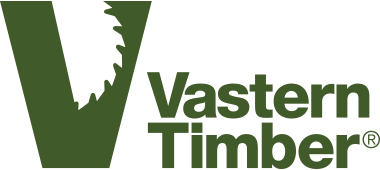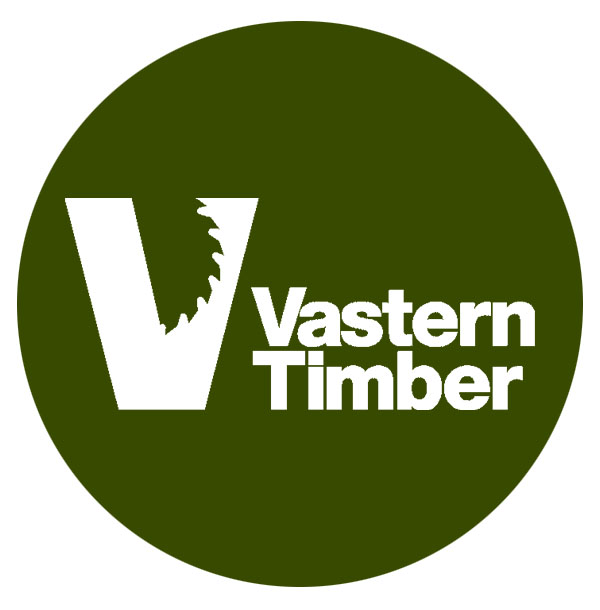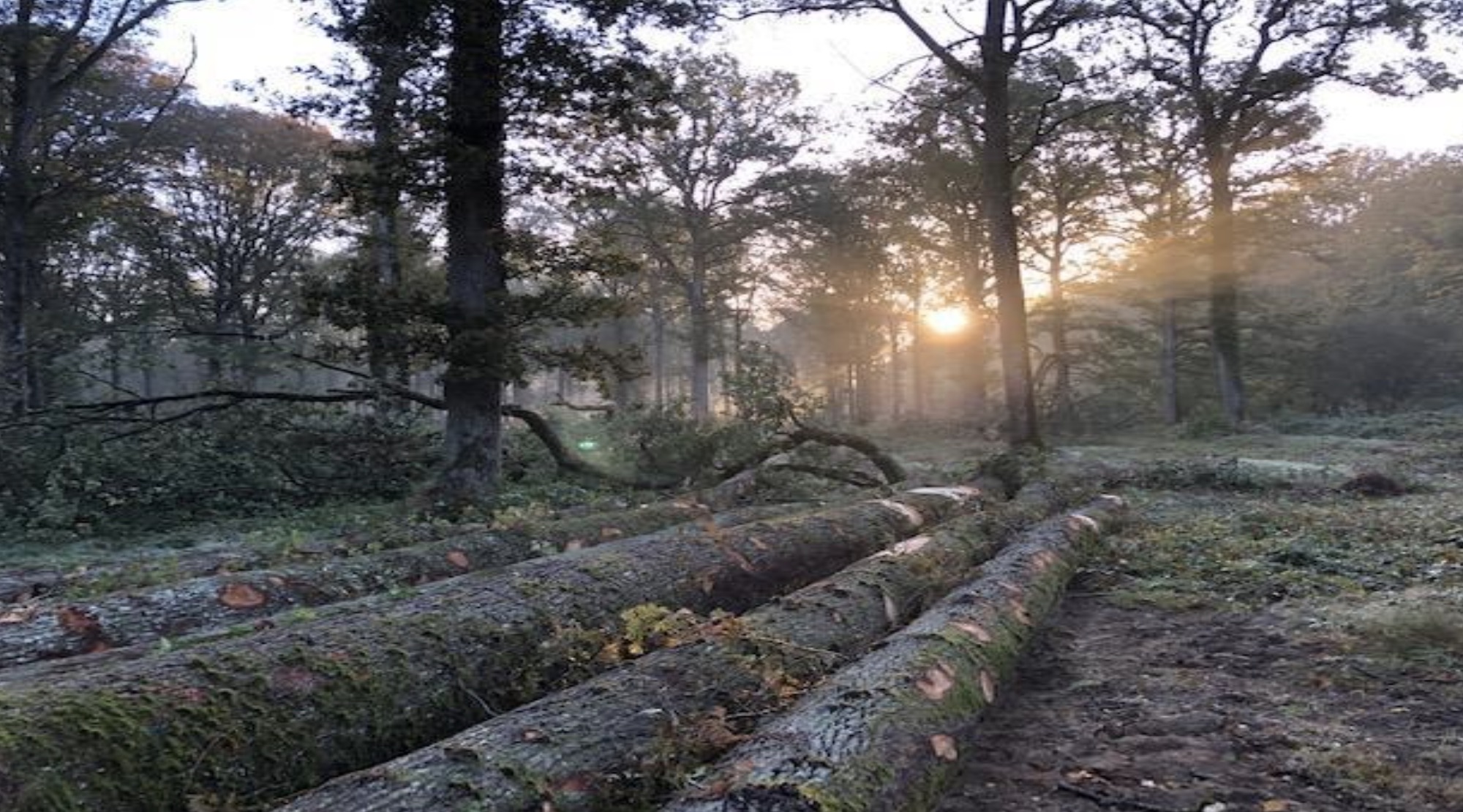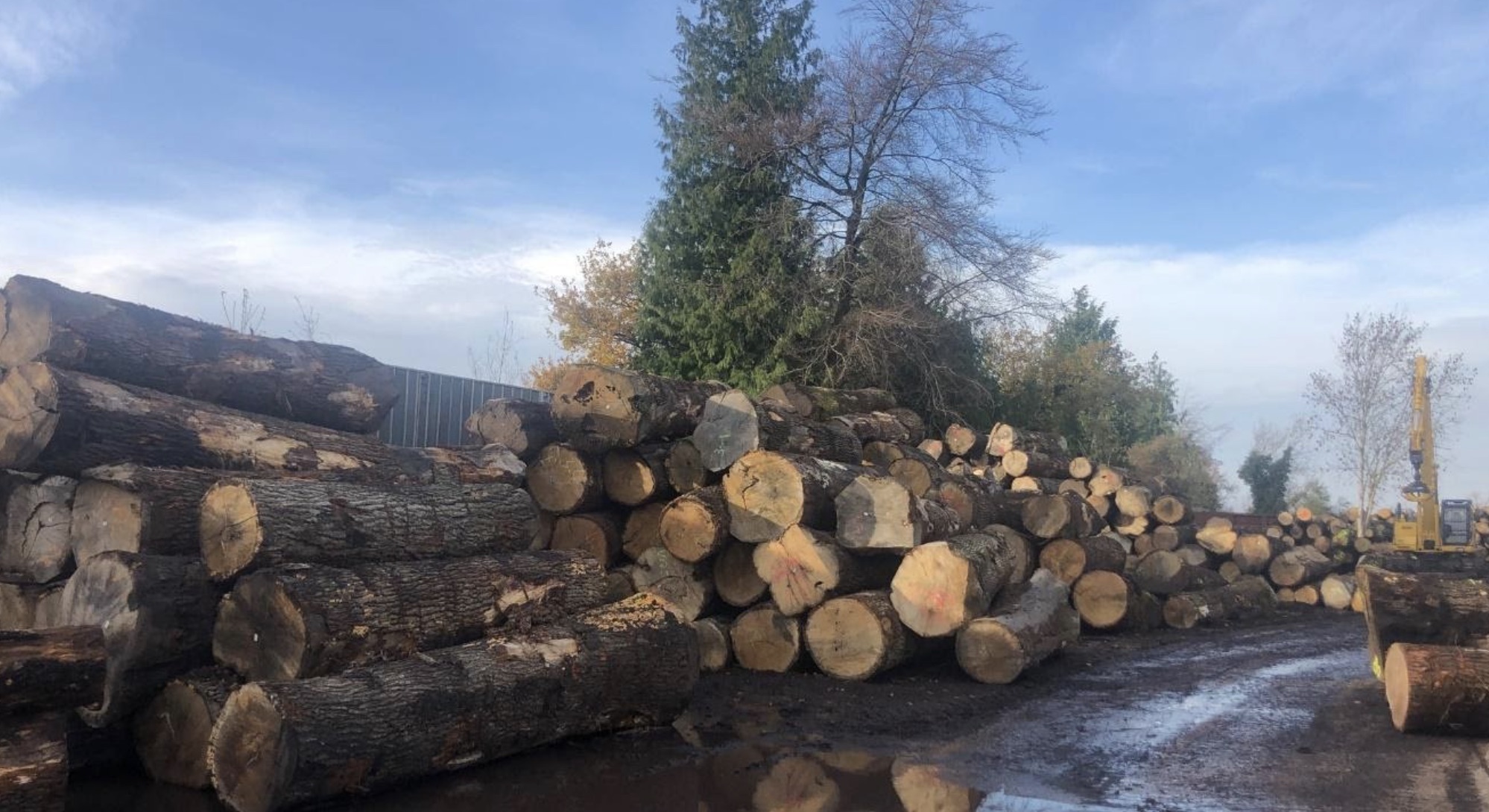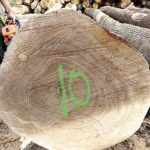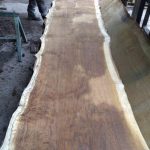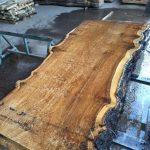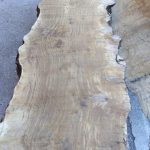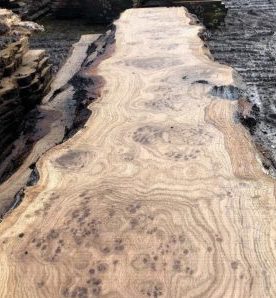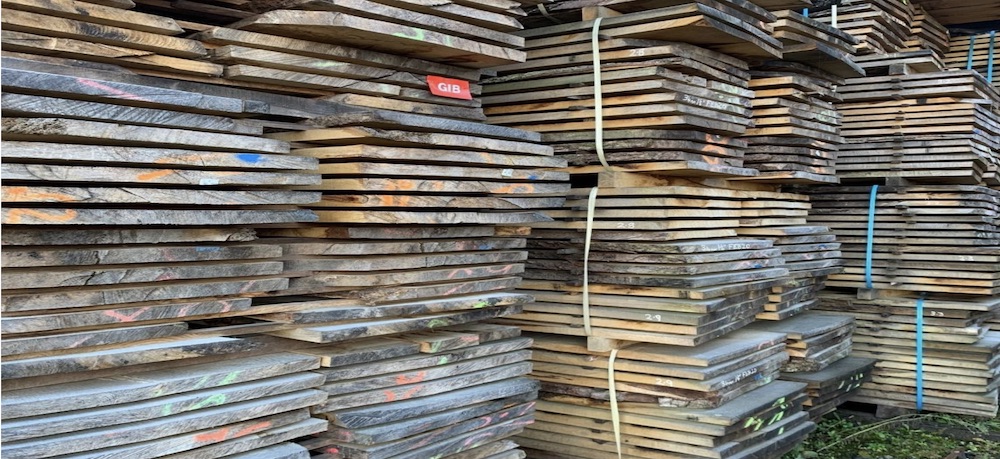February 3, 2022
How we turn trees into beautiful oak planks
It may be hibernation time. But at Vastern Timber, we couldn’t be further from hibernation mode. In fact, if you popped down to our sawmill right now, you’d witness a hive of activity.
These cold, damp days are actually very helpful for us. When the temperature drops and the humidity increases, it’s the optimum time for sawing oak planks.
If you saw oak when the air is too dry and warm, the wood will distort and crack. So we’re pretty busy now – and planks a plenty are emerging fresh from our sawmills.
The journey from tree to plank
People often ask us how we turn big oak trees into our beautifully flat, smooth planks. So we thought we’d take you behind the scenes and show you how it’s done.
1. Sourcing the oak trees
Oak trees are slow growers and take over two hundred years to reach a size that’s suitable for cutting planks. It’s crazy to think that the trees we’re cutting now began their lives around the coronation of George IV.
Each year, our log buyer, Rupert, travels far and wide through English and French woodlands searching for these oak trees. Ones that are not only big, but also from well-managed woodlands that are replanting for the future.
This year, Rupert has sourced oak in woodlands ranging from the Scottish Borders to Bergerac and Devon to Dijon. Yep, it’s a nice job!
2. Storing the oak
Once we’ve transported the logs to our yard, we store them for at least six months to allow them to relax and release tension.
It sounds like a long time, but achieving good quality dry boards takes patience. They have to be treated with care.
3. Using the best part of the tree
When it comes to creating oak planks, not all parts of a tree are created equal.
The bottom part of the tree, known as the ‘Butt’ (no sniggering), is where you’ll find the highest quality wood. And it’s this part that we cut for oak planks.
4. The big reveal
Cutting oak is always a gamble.
You get the good, the bad, the ugly – and the downright amazing.
When we buy the logs, we don’t know what’s hidden inside them. Remnants from the wars, metal spikes and rusty nails are common. So are wormholes, brown stain and the dreaded ‘shake’ (splits).
However, there’s a lot of joy that comes with the cutting too. Some of the logs open up so much better than we expect. And even after all these years, we still exclaim at their beauty.
5. Drying the oak
Next up, it’s the drying process. And there is an age-old rule for drying oak – one year for each inch of thickness. This can feel like a long wait but after hundreds of years of growing, it seems wrong to rush the process.
That’s why we give it time. We wait until the wood is just right.
And only then do we sell it to you.
So there you have it…
Tree to finished plank – and all the steps in between.
Whether it’s for furniture, flooring or cladding, when you come to Vastern, you know the oak you buy has been treated with care.
In fact, it’s not just the knowing. We think you’ll see that care in your final oak product too.
See the latest from our sawmill on our ‘best sawn plank’ page, or use the links below for more information.
And if you need any help or advice on sourcing the right wood for your project, please get in touch. We’re always happy to help.
